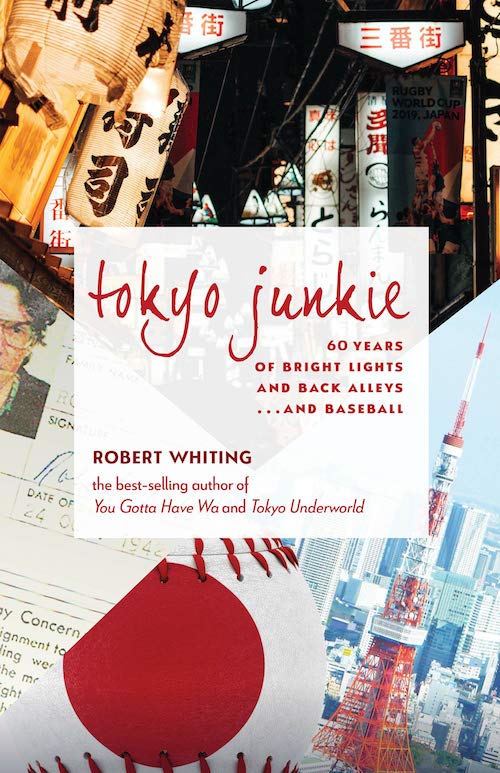
Early in his new book, Robert Whiting refers to the “Yamate Line,” and most readers who have been to Tokyo in the past half-century will suspect a misprint. Few visitors to the Japanese capital could avoid the subway train in question, which runs in a loop through such well-known districts as Shibuya, Shinjuku, Ikebukuro, and Ginza. But they’ll know it as the Yamanote Line, a romanization of its Japanese name (literally “mountain’s hand,” equivalent to the English “foothill”) first adopted in 1971. But by then, the Californian Whiting had already logged almost a decade in Japan, having been sent there by the United States Air Force in 1962. “Tokyo is the best city in the world,” he remembers a master sergeant saying when informing him of his posting: “You’ll be over there with all those geisha girls, riding around in rickshaws. Ten million people. More neon signs than you can imagine.”
The neon comes up quite often throughout Tokyo Junkie: 60 Years of Bright Lights and Back Alleys … and Baseball, as one of the city’s few constants during a period of ceaseless change. Whiting closes his memoir with his 77th birthday lunch at the Mandarin Oriental Hotel in Nihonbashi: “It occurred to me over our gelato that there is very little left in Tokyo that is older than I am, given how this city keeps on renewing itself.” He arrived nearly 60 years ago to “the biggest construction site in the world,” a transformation motivated by preparation for the 1964 Summer Olympics. Still, there were plenty of attractions amid all the dust: there were “deluxe movie theaters with 70mm screens, and pachinko pinball parlors jangling noisily all day long,” beside “noodle stands, yakitori shops with their smoky grills, food marts, and discount shops,” beside “ancient temples with serene gardens of gravel and rocks and inner courtyards.”
As in many pre-Olympics development binges of the 20th century, an overarching goal was to bring the infrastructure of a “backward” country up to the standards of the modern West. “[D]espite the frantic rebuilding, less than a quarter of the city’s twenty-three sprawling wards had flush sewage systems at all, making Tokyo one of the world’s most undeveloped (and odiferous) megalopolises,” Whiting recalls, olfactory memories supposedly being the most deeply recorded of them all: “Tokyo was also rat-infested. Some 40 percent of Japanese had tapeworms. There were no ambulances, and infant mortality was twenty times what it is today. Moreover, house theft was rampant, narcotics use was endemic, and it was considered too dangerous to walk in public parks at night.” This is a far cry indeed from the city world-renowned for its safe streets at all hours, its high-tech bidets, and its far-reaching, precision-engineered train networks.
Read the whole thing at the Los Angeles Review of Books.